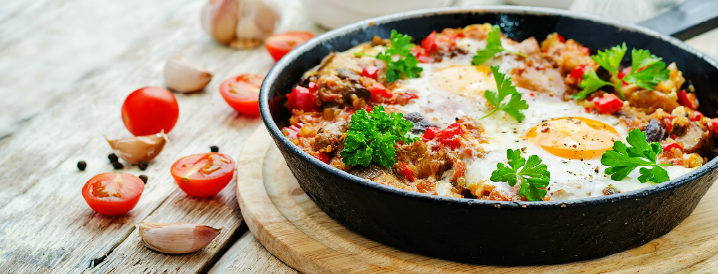Tunisia is a wonderland for all those who love to discover various global cuisines. With the perfect amalgamation of Arabic cooking and French cuisine, you are in for a treat in Tunisia if you love tasty foods.
Appetizers
Harissa is the most common Tunisian appetizer which often finds its presence as a part of every meal. Made of olive oil, cumin, garlic and dried chilli peppers, Harissa is placed as a complimentary selection in all restaurants along with the other starters such as olives and breads. It’s interesting to note that most restaurants and families have their individual recipe but one of the most common variations involves sprinkling tuna on top of it.

Speaking of appetizers, michouia is another popular choice for the Tunisian cuisine connoisseur which is more of a mix of cooked vegetables with olives, tuna, boiled eggs, and other embellishments. Salade Tunisienne and chorba (which is a peppery soup) definitely needs special mention as Tunisian appetizers. In its rawest form, the Tunisian salad is quite basic with the main aim is to emphasize on the freshness through its natural ingredients.
Brik
If one has to name a single Tunisian cuisine, it is Brik and as the tradition goes, it is a must-have during the second course of Ramadan.
Because of ease of cooking, it has become a popular appetizer. In fact, there’s rarely any bad brik so to speak. It is based on malsouqa, the pastry shell and is hand-made into a thin and circular appetizer. The pastry shell can be filled up either with egg, tuna or parsley, Ingredients such as cheese and capers are also used sometimes to add to the difference of the taste.
Importance of olive oil in the Mediterranean diet
Oleiculture (the word used to describe the production, processing, and marketing of olives) is the main agricultural activity of Tunisia. The country has more than 1 million workers involved in the production of the fruit. Astonishingly, about 80% of the olive oils naturally produced and the majority of Tunisian olive oil farmers do not use pesticides or fertilizers in the cultivation. The Tunisian olives are rich in carotene, lecithin, and polyphenols along with being a rich source of vitamins A and D.
Taste the National Dish
Couscous is Tunisia’s national dish which is essentially semolina granules. As the folks say, this dish dates back to the ancient Berbers, and that couscous is a grain which can be served in 300 different ways. The grains are steamed over and typically served with a stew of with veal, lamb or fish and not to forget the very own harissa which is served along the plate.

Some commonly served Tunisian cuisines are:
- Khobz Mella: often served as the ‘must try before you die’ dish, speaks galleons about the popularity of the food. Cooking Khobz Mella is very difficult which is why if you are in Tunisia, do not forget to taste it from the expert chefs.
- Lamb a la gargoulette: made from lamb, this dish is made in a sizzling pot and follows a old age recipe which is available only in Tunisia.
- Kefta: it is a fried meaty dish made from minced lamb or meat and mixed with various spices and chopped onions. It is usually served with carrot salad and tomato sauce.
- Tajine: it has lamb as the main ingredient, and it is a casserole and resembles Italian frittata to a large extent.
